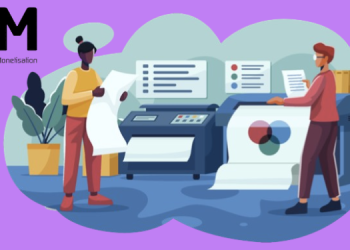MUMBAI: The focus of the print medium will be on quality readers according to the Ficci EY Report.
As the country moves more towards one paper in the home, the focus of print companies will be on building their brand and loyal reader base, rather than discounting to sell subscriptions, and thereby grow circulation at the cost of competing products
Building a loyal customer base can be achieved in many ways, like providing more local and hyper-local news, in-depth analysis, viewpoints from influencers and celebrities, content more linked to career and personal success, coupons and discounts on e-commerce sites, etc.
Print companies will increasingly target high-rises and more affluent audiences to grow circulation
Core print revenues will grow marginally
The report expects the print segment to grow at less than 1% CAGR till 2027
Advertising will grow at a 2% CAGR, driven by access to increasingly elusive NCCS A audiences and premium inventory formats
Subscription may see a decline of (-)2% CAGR as circulation continues to fall
The affluence + tier-II and III story will resonate with advertisers
As consumption grows faster in smaller towns thanin many metros4, and affluence spreads across the country, the consumption story must be communicated strongly to media buyers
For many regional newspapers, a “state ownership” strategy will help in garnering a higher share of wallet, where the newspaper brand becomes the window to all media in that state for advertisers
News companies will focus on getting brands to spend consistently on print in 2025, rather than in short, tactical bursts, or when they see sales drop
There is scope for ad rates in regional language papers to correct as consumption grows faster in those markets than in metros
The focus will increase on SME advertisers
The report expects print companies to increase their focus on SME advertisers (the report estimates their digital spends in 2024 to be around Rs. 258 billion, gross) as this category of advertisers is increasing its spends on media faster than larger advertisers
The report expects to see self-serve platforms being launched for them, aided by generative AI tools to help with content creation, as well as more innovations like scanto- buy and e-commerce linkages to enable transactions
For smaller SMEs, split editions will continue to be created to increase affordability
Events will gain in importance
Print companies’ trusted brands will continue to provide advertisers with credible platforms to connect with their audiences, B2B or B2C
The report expects print companies to increase event revenues to 8% to 9% of topline by 2027
“35 will be the new 25”
Most young readers used to come to print after completing their education and starting work at 25 years of age, but that age has increased to 35 years now as youth have fewer responsibilities at 25 than they used to
Creating products with exclusive content for this class of career professionals, including premium products that help with career growth, will be important to keep readers coming back to print
The narrative of “10 minutes, 20 pages” can be used as the path to personal and career success
Cover prices may need to increase
The fall in circulation, the need to incentivise distribution partners, and expected increases in newsprint prices (as well as the falling rupee exchange rate) can force news publishers to consider increasing cover prices
The conundrum of increasing cover prices to sustain profits while circulation reduces will result in micropricing strategies depending on brand strength and market leadership
We will see increased bundling
Flexibility in pricing strategies, selective price increases, and strategic partnerships could be a proactive approach to sustain and grow readership
The report expects to see many bundling innovations, such as: ƒ corporate offers, educational institutions,ƒ bundles with D2C brands, telcos and e-commerce platforms
ƒ digital + physical offers
The report expects a common magazine app to be launched with access to many major magazines, discussions for a magazine store on ONDC and other initiatives to increase digital reach
Young readers will force a new strategy
The print segment faces challenges in attracting younger readers, and that can be an existential threat
The report expects to see increased investment in products (both physical and digital) for young audiences and those who are entering the workforce, linked to syllabus and their specific needs
The news in education (NIE) programme will see increased focus as content linked to education will be increasingly made available to students, either physically or on digital media, including English newspapers being made available in regional language markets
News brands will also focus more on connecting with youth audiences on social media, where their consumption of news takes place
Revenue streams will diversify
In order to increase revenues, we expect print companies to look to new revenue streams, which could include:
Monetising content, including archives, on digital media
Explore innovative content formats such as short video, podcasts and curated short films
Evaluating high-priced products tailored for niche
audiences
Consider launching international editions to tap Indian diaspora
Build communities around Indian themes, which can be monetized globally e.g., yoga and spirituality
Digital news will be a collaborative effort
News publishers will focus on creating a credible digital story. Some initiatives could include:
Providing “certified inventory” to increase trust in advertisers and thereby increase ad yield
Building 1P data through interactivity, partnerships and data sharing, to enable better targeting for advertisers
Enabling cross-platform measurement, so that print + e-paper + mobile + CTV audiences can be packaged and sold together
Leveraging digital audiences for content commerce and integrating sales teams for cross-platform advertising
Rolling out a One-India news app with participation from all leading news brands as a united platform with a massive consumer base, thereby saving on customer acquisition costs as well as generating usable consumption and audience data, particularly in a cookie-less world, where first party data becomes critical for ad efficiency
Sustainability will matter more
Several environmental initiatives will be undertaken to present a more sustainable product proposition to readers, from use of solar power, building windmills, tree-plantations,
lower GSM paper use, electric transportation, reduction of single-use plastic, etc.
Efficiencies and scale will be important
Generative AI provides publishers the opportunity to develop hyper-personalised content at scale, while at the same time reduce the effort pertaining to research, analysis and editorial
Infrastructure sharing – on the lines of the tower sharing companies created by telcos – across news gathering, printing, distribution and ad sales can lead to significant cost reduction
As the print segment focusses on efficiency, it will need to invest more in attracting talent to innovate and think differently.

















